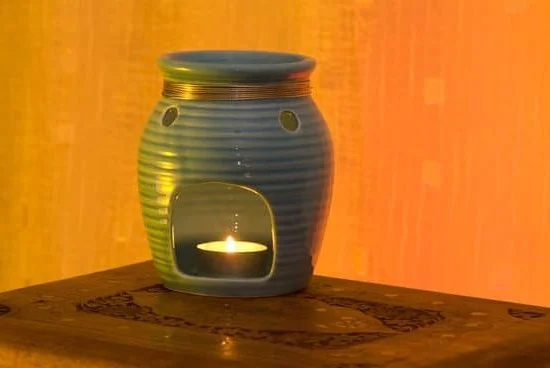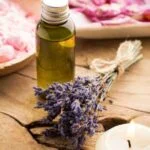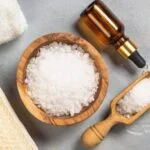Can you use aromatherapy oils in melt and pour soap? The concept of melt and pour soap has been gaining popularity, especially with the increasing interest in natural skincare products. With this trend, the use of aromatherapy oils in skincare has also become more prevalent. Aromatherapy oils are known for their therapeutic benefits and soothing scents, making them an appealing addition to melt and pour soap formulations.
As more people seek out natural alternatives for their skincare routines, the use of aromatherapy oils in melt and pour soap has become a topic of interest. Aromatherapy oils, also known as essential oils, are derived from various plants and have been used for their aromatic and medicinal properties for centuries. They are believed to offer a range of benefits for both physical and emotional well-being.
In this article, we will explore the potential impact of using aromatherapy oils in melt and pour soap, including the benefits and uses of these oils in skincare. We will also discuss how to choose the right aromatherapy oils for your soap-making projects, as well as important considerations when incorporating them into your formulations.
Additionally, we will provide a step-by-step guide on safely and effectively using aromatherapy oils in melt and pour soap, along with tips for maximizing their aromatic and skincare benefits.
Understanding Aromatherapy Oils
Aromatherapy oils have become increasingly popular in skincare products due to their natural and therapeutic properties. These essential oils are derived from various plants and flowers, each with its own unique benefits and uses. When it comes to melt and pour soap, the addition of aromatherapy oils can elevate the product by not only providing a pleasant fragrance but also offering potential skincare benefits.
The use of aromatherapy oils in melt and pour soap can enhance the overall experience of using the soap. Essential oils such as lavender, tea tree, and peppermint are known for their calming, antibacterial, and invigorating properties, respectively. When incorporated into melt and pour soap, these oils can provide aromatherapeutic benefits during use, promoting relaxation and stress relief. In addition to their aromatic qualities, many aromatherapy oils also offer skincare benefits such as moisturizing, toning, and soothing properties.
It is important to note that not all essential oils are suitable for use in skincare products like melt and pour soap. Some essential oils may cause skin sensitivities or reactions if used in high concentrations or on sensitive skin types. Therefore, it is crucial to choose the right aromatherapy oils based on their suitability for skincare and their compatibility with the melt and pour soap base.
| Aromatherapy Oil | Skincare Benefits |
|---|---|
| Lavender | Calming, soothing, antiseptic |
| Tea Tree | Antibacterial, anti-inflammatory |
| Peppermint | Invigorating, cooling sensation |
Choosing the Right Aromatherapy Oils
When choosing aromatherapy oils for use in melt and pour soap, it’s important to consider their properties and suitability for skincare. Here are a few types of aromatherapy oils that are ideal for incorporating into melt and pour soap, along with their beneficial properties:
- Lavender Oil: Lavender essential oil is known for its calming and soothing properties, making it a popular choice for relaxation and stress relief. It also has antibacterial and anti-inflammatory properties, making it beneficial for skincare.
- Tea Tree Oil: Tea tree oil is widely recognized for its antimicrobial and antiseptic properties, making it a great choice for cleansing and purifying the skin. It can help address issues such as acne and skin irritations.
- Peppermint Oil: Peppermint essential oil has a refreshing scent and cooling sensation, making it an invigorating choice for bath products. It also has antimicrobial properties that can benefit the skin.
These are just a few examples of aromatherapy oils that can you use in melt and pour soap, but there are many others to choose from. When selecting aromatherapy oils for your melt and pour soap recipes, be sure to research their specific benefits and potential effects on the skin to create the desired outcome.
In addition to these types of aromatherapy oils, citrus oils like lemon or orange can provide energizing scents while offering mild antiseptic properties. Meanwhile, floral essential oils such as rose or geranium can add luxurious fragrances to your soap while also offering skincare benefits like hydration or balancing oil production.
Overall, the selection of appropriate aromatherapy oils will depend on your desired outcomes for your melt and pour soap, whether it’s relaxation, skincare benefits, or simply creating an enjoyable sensory experience. Understanding the unique properties of each oil will help you make informed choices when crafting your own aromatherapy-infused melt and pour soaps.
Considerations for Melt and Pour Soap
When incorporating aromatherapy oils into melt and pour soap, there are several important factors to consider in order to ensure a successful and safe product. Understanding the impact of aromatherapy oils on the stability, fragrance retention, and potential skin sensitivities is crucial for creating a high-quality soap that delivers both aromatic and skincare benefits. Here are some considerations to keep in mind when using aromatherapy oils in melt and pour soap:
1. Stability: Aromatherapy oils can be delicate and prone to degradation when exposed to heat, light, or air. It’s important to choose oils that are stable under the conditions required for making melt and pour soap. Oils with good stability will retain their beneficial properties and scent throughout the soap-making process.
2. Fragrance Retention: Certain aromatherapy oils have stronger staying power than others, and it’s essential to select oils that will maintain their fragrance when added to melt and pour soap. Essential oils with low volatility are ideal for ensuring that the scent of the soap remains consistent over time.
3. Potential Skin Sensitivities: Some aromatherapy oils can cause skin sensitivities or allergic reactions in certain individuals. When choosing which oils to use in melt and pour soap, it’s important to consider their potential impact on different skin types. Selecting oils that are known for being gentle on the skin can help minimize the risk of adverse reactions.
Incorporating these considerations into the selection of aromatherapy oils for use in melt and pour soap can help create a product that not only smells wonderful but also provides skincare benefits without causing any harm or irritation.
When using aromatherapy oils in melt and pour soap, it is essential to choose those that contribute positively to both the fragrance and skincare aspects of the final product. By considering factors such as stability, fragrance retention, and potential skin sensitivities, makers can ensure that their aromatherapy-infused soaps deliver a satisfying experience for users while promoting overall skin health.
Incorporating Aromatherapy Oils
Choosing the Right Aromatherapy Oils
When incorporating aromatherapy oils into melt and pour soap, it is crucial to choose the right oils that are safe for use on skin. Essential oils such as lavender, tea tree, peppermint, and eucalyptus are popular choices for their skincare benefits and soothing properties. These oils are known for their antibacterial, antifungal, and anti-inflammatory properties, making them ideal for use in skincare products like melt and pour soap.
Recommended Usage Rates
It is important to use aromatherapy oils in the correct amounts to ensure safety and effectiveness in melt and pour soap. The recommended usage rate for essential oils in melt and pour soap is typically around 1% to 3% of the total weight of the soap base.
This ensures that the fragrance is not overpowering and minimizes the risk of skin sensitivities or irritations. It is also essential to follow guidelines provided by suppliers or manufacturers regarding maximum usage rates for specific essential oils.
Mixing Techniques
To effectively incorporate aromatherapy oils into melt and pour soap, proper mixing techniques should be utilized. Once the soap base has melted, allow it to cool slightly before adding the essential oils. Stir gently but thoroughly to ensure even distribution of the fragrance throughout the soap.
It’s important to avoid over-mixing as it can cause air bubbles to form in the soap. Additionally, some essential oils may react differently with certain additives or colorants, so it’s recommended to conduct a small test batch before creating larger quantities of aromatherapy-infused melt and pour soap.
By carefully selecting suitable aromatherapy oils, following recommended usage rates, and employing proper mixing techniques, you can effectively incorporate these beneficial oils into melt and pour soap for a delightful sensory experience along with skincare benefits.
Fragrance Blending
Understanding Aromatherapy Oils for Fragrance Blending
When it comes to crafting unique fragrance blends for melt and pour soap, it’s essential to have a good understanding of the aromatherapy oils being used. Each essential oil carries its own distinct aroma and therapeutic properties, which can greatly impact the final scent of the soap.
Some oils, such as lavender and chamomile, are known for their calming and soothing effects, while others like peppermint and eucalyptus are invigorating and refreshing. By familiarizing yourself with the various aromatherapy oils available, you can better create harmonious fragrance blends that cater to different preferences and needs.
Creating Harmonious Fragrance Blends
One of the key factors in crafting unique fragrance blends using aromatherapy oils for melt and pour soap is finding a balance between different scents. It’s important to consider the intensity of each oil and how they will complement or contrast with one another when combined.
For example, combining floral notes like rose or geranium with citrusy scents like bergamot or lemon can create a well-rounded aroma that appeals to a wide range of individuals. Experimenting with different combinations is part of the fun in creating custom fragrances, but it’s crucial to use small amounts at first to ensure that the final blend is pleasant and not overwhelming.
Tips for Successful Fragrance Blending
To achieve a harmonious result when blending aromatherapy oils for melt and pour soap, there are some helpful tips to keep in mind. Firstly, start by choosing a primary scent that will be the focal point of the blend, then add supporting oils that enhance its characteristics without overpowering it. Additionally, consider mixing oils from different scent categories – such as floral, woody, herbal, and citrus – to create complexity in the fragrance profile.
It’s also wise to keep detailed records of your recipes and measurements so that successful blends can be replicated in the future. Finally, always perform a small test batch before committing to a larger amount of soap to ensure that the fragrance blend turns out as intended.
Yes,having knowledge on how Aromatherapy Oils work can help you effectively make decisions when crafting your products career path if looking into making healthier products using different combinations while designing your product Lineacies(s).
Benefits of Aromatherapy Melt and Pour Soap
When it comes to skincare, many people are turning to natural and holistic solutions for their beauty needs. Aromatherapy oils have become increasingly popular in skincare products, including melt and pour soap. These oils are derived from plants and flowers and are often used for their therapeutic properties. They can provide a range of benefits, including relaxation, stress relief, and various skincare benefits.
One of the primary benefits of using aromatherapy oils in melt and pour soap is the potential for relaxation and stress relief. Essential oils such as lavender, chamomile, and ylang-ylang are known for their calming properties, making them ideal choices for creating a soothing bathing experience. Incorporating these oils into melt and pour soap can help promote a sense of calm and tranquility during bath time.
In addition to promoting relaxation, aromatherapy oils can also offer various skincare benefits when used in melt and pour soap. Oils like tea tree, eucalyptus, and peppermint have antibacterial and antimicrobial properties that can help cleanse the skin and promote overall skin health. Other essential oils like rosehip, frankincense, or geranium may also offer nourishing properties that can help hydrate and rejuvenate the skin.
Another potential benefit of using aromatherapy-infused melt and pour soap is the customizable fragrance blends that can be created. With a variety of essential oils to choose from, crafters can experiment with different combinations to create unique scents that cater to individual preferences or specific aromatherapy goals.
| Benefit | Description |
|---|---|
| Relaxation & Stress Relief | Aromatherapy oils like lavender, chamomile, and ylang-ylang promote a sense of calm during bath time. |
| Skincare Benefits | Oils like tea tree, eucalyptus, peppermint cleanse the skin; others like rosehip or geranium offer nourishing properties. |
| Customizable Fragrance Blends | The ability to create unique scents by blending different essential oils according to individual preferences. |
Tips for Using Aromatherapy Melt and Pour Soap
In conclusion, using aromatherapy oils in melt and pour soap can be a wonderful way to enhance the aromatic and skincare benefits of your homemade soaps. With the growing popularity of aromatherapy oils in skincare products, many people are seeking natural and holistic alternatives for their daily routines. Aromatherapy-infused melt and pour soap provides an excellent opportunity to enjoy the therapeutic benefits of essential oils while cleansing and nourishing the skin.
When it comes to choosing the right aromatherapy oils for your melt and pour soap, it’s important to consider factors such as stability, fragrance retention, and potential skin sensitivities. Selecting high-quality oils with beneficial properties can make a significant difference in the effectiveness of your soap. By carefully incorporating these oils into your soap-making process using recommended usage rates and techniques, you can create beautiful blends that offer relaxation, stress relief, and skincare benefits.
Additionally, understanding how to properly store and use aromatherapy-infused melt and pour soap is essential for maximizing its benefits. By following practical tips and tricks for storage and usage recommendations, you can ensure that your soaps maintain their fragrance potency and skincare properties over time. Whether you are making these soaps for personal use or as gifts for loved ones, incorporating aromatherapy oils can elevate the overall experience of using melt and pour soap.
Frequently Asked Questions
Can You Use Essential Oil in Melt and Pour Soap?
Yes, you can use essential oils in melt and pour soap. Essential oils are often added to provide fragrance and potential therapeutic benefits to the soap. However, it’s important to use them sparingly as they can be potent.
Can Aromatherapy Essential Oils Be Used in Soap Making?
Aromatherapy essential oils can indeed be used in soap making, particularly in melt and pour soap. These oils are known for their aromatic properties and may also offer various therapeutic benefits when used in soap.
What Should Not Be Added to Melt and Pour Soap?
There are certain ingredients that should not be added to melt and pour soap, such as fresh fruits or vegetables, dairy products, honey, or other perishable items. These can cause the soap to spoil or have a short shelf life. Additionally, using too much of certain additives like exfoliants or colorants can affect the quality of the soap.

Are you looking for a natural way to improve your health and wellbeing?
If so, aromatherapy may be the answer for you.





